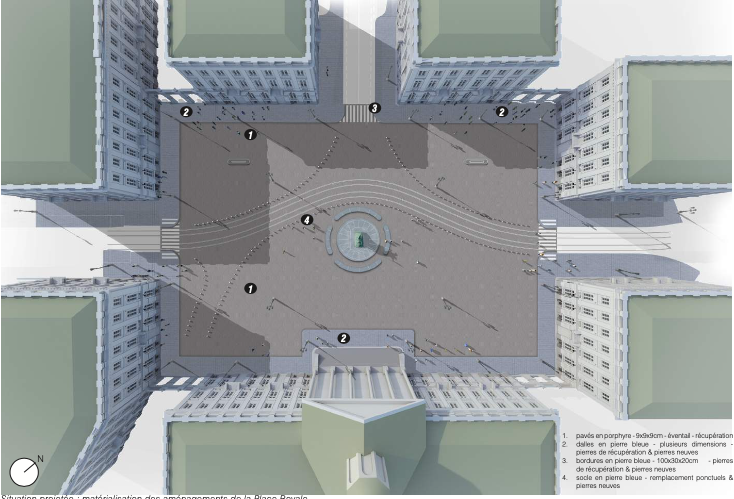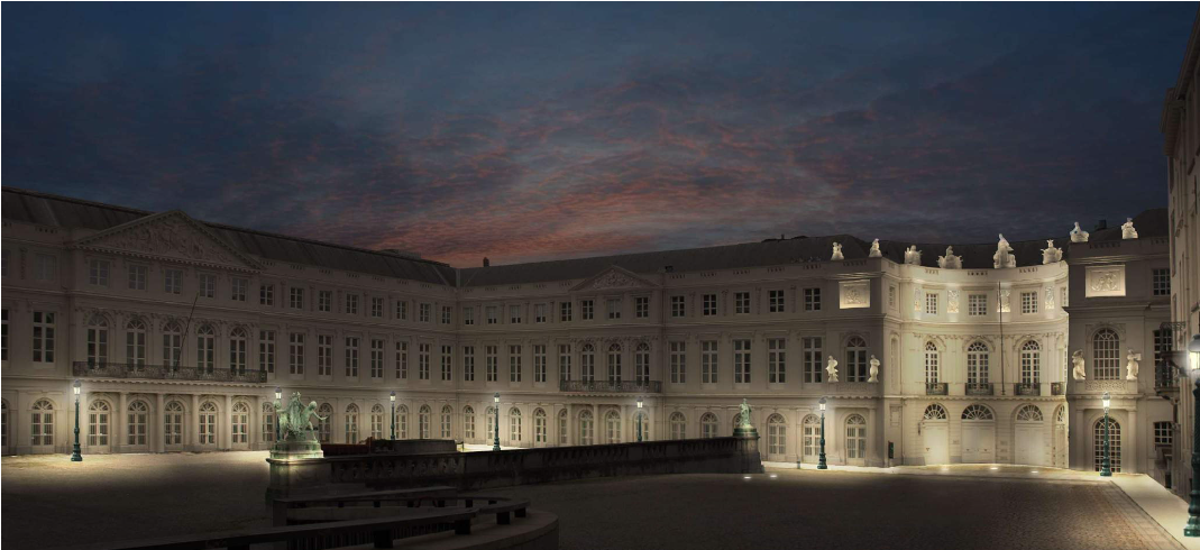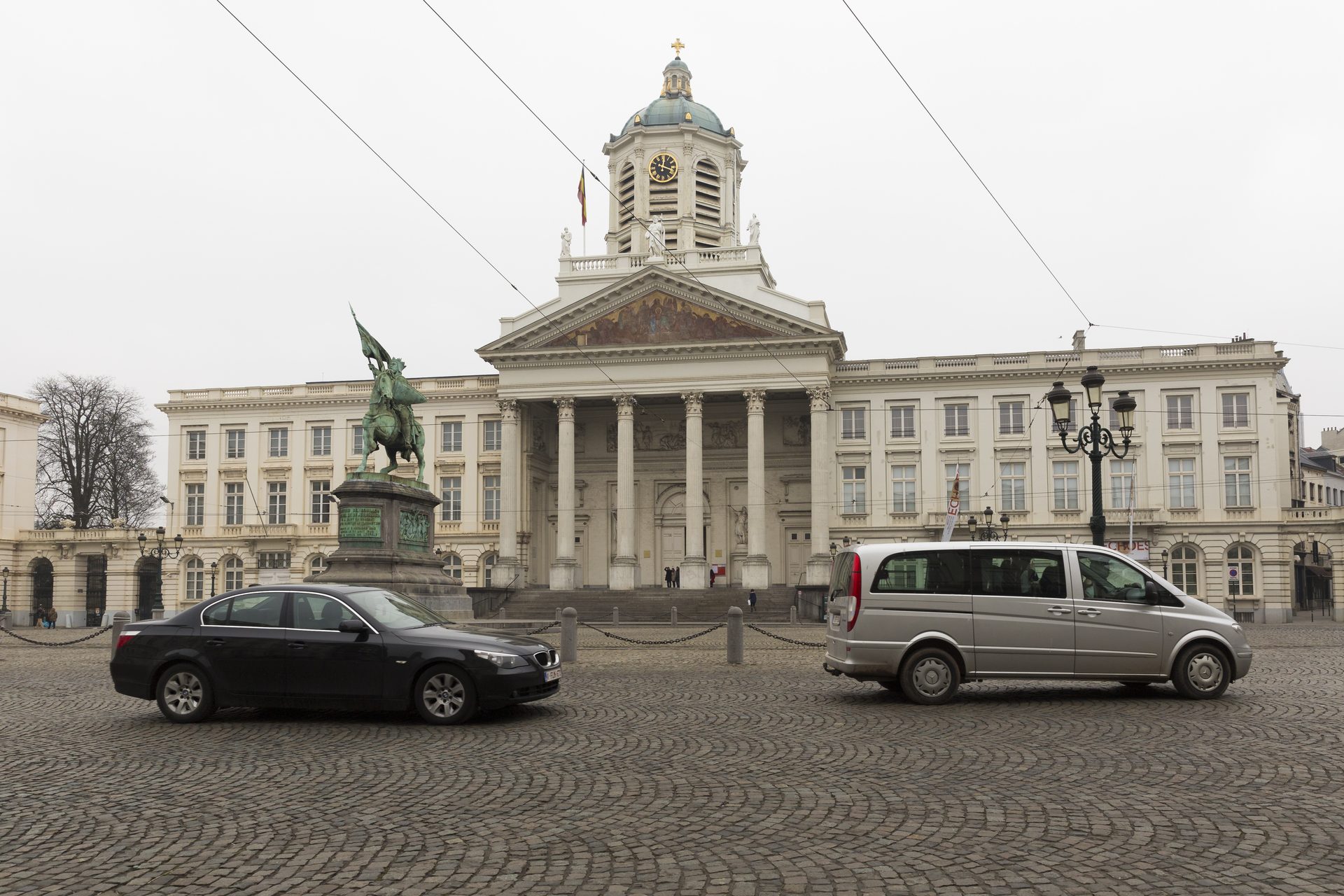Planning permission has been granted to transform the busy, dangerous roundabout on Place Royale in the centre of Brussels into a pedestrian-friendly square.
Located at the top of Mont des Arts, the Place Royale is considered to be one of the most beautiful locations in Brussels. However, the traffic situation at the roundabout is chaotic at best, as trams, cars, buses and pedestrians – many of whom are tourists who chance their luck and weave their way through fast vehicles to the central statue – have to share the space near the roundabout.
Currently, only 20% of Place Royale is reserved for pedestrians, while 80% is dedicated to motorised traffic: a striking imbalance. However, Urban.brussels has granted planning permission for a redevelopment to reverse this trend, which will see 85% of the emblematic square become car-free, Brussels Secretary of State for Town Planning Ans Persoons announced on Wednesday.
"From a roundabout for cars to an absolute eye-catcher for our city. Place Royale is finally getting its well-deserved redevelopment. Located between the Royal Palace and Mont des Arts, and surrounded by some of Brussels' finest museums, it was high time for a thorough metamorphosis to restore this square to its former splendour," Persoons said.
Freeing statue from traffic
The current "roundabout principle" will be replaced by a T-formed junction by Rue de la Régence, Rue Royale and Rue Montagne de la Cour heading to Mont des Arts. Trams and buses, as well as cars, will travel in two directions on a single-carriageway to the northwest of the square, on the Coudenberg and Mont des Arts side.
Vehicles and trams will therefore no longer be able to circulate around the statue of Godfrey of Bouillon, but pass in front of it. The monument will be located entirely within the pedestrian zone, making it possible to easily walk right up to the statue, which itself will be cleaned and renovated.

Image shows the redirected traffic route to the north of the square. Credit: Beliris - SM SWECO | West 8 | Cerau - ACT Lighting Design / Studio d’Urbanisme Jean-Pierre Majot
The separated route will be sectioned off with bollards, so the zone for motorised traffic is clearly defined, restricted and recognisable for all road users. The carriageway will also provide a secondary connection to Rue de Namur leading up to Porte de Namur.
By concentrating car traffic on the northwest side of the square, the space for pedestrians and cyclists is significantly increased. The historic blue stone pavements around the edges of the square will be maintained at their current width and are reserved exclusively for pedestrians.

Credit: Beliris - SM SWECO | West 8 | Cerau - ACT Lighting Design / Studio d’Urbanisme Jean-Pierre Majot
However, pedestrians can also move freely between the pavements and the traffic-restricting bollards, but they will have to share this area with cyclists. The pavements in the streets leading to the square will be widened to improve pedestrian comfort and structure the space.
Finally, the central part of the square will retain its existing features – the porphyry mosaic cobblestones – which will be renovated using the existing pavers. New custom-made benches in bluestone with copper details will be installed around the base of the statue and opposite the Musical Instrument Museum and the Magritte Museum.
Highlighting architectural heritage
The project not only targets mobility solutions; the licence also includes up-lighting the facades of the iconic white neoclassical buildings in the square, including the Saint-Jacques-sur-Coudenberg church and the former palace of the Count of Flanders, which now houses the Court of Audit.

Illustration highlights was lighting features will look like once finalised. Credit: Beliris - SM SWECO | West 8 | Cerau - ACT Lighting Design / Studio d’Urbanisme Jean-Pierre Majot
The main aim of this scenographic lighting is to "enhance the appeal of the Arts Quarter, Brussels' main cultural and museum zone, and to highlight the architectural beauty of Brussels at night too."
In December last year, an urban planning permit was already issued to illuminate other emblematic buildings around Place Royale, including the facades of Bozar, the former Hotel Ravenstein and the Musical Instrument Museum.
Beliris, the owner of the project, can now proceed with the calls for tender and begin the administrative procedures to prepare for future works. The total budget for the reconstruction project is estimated at around €5 million.

